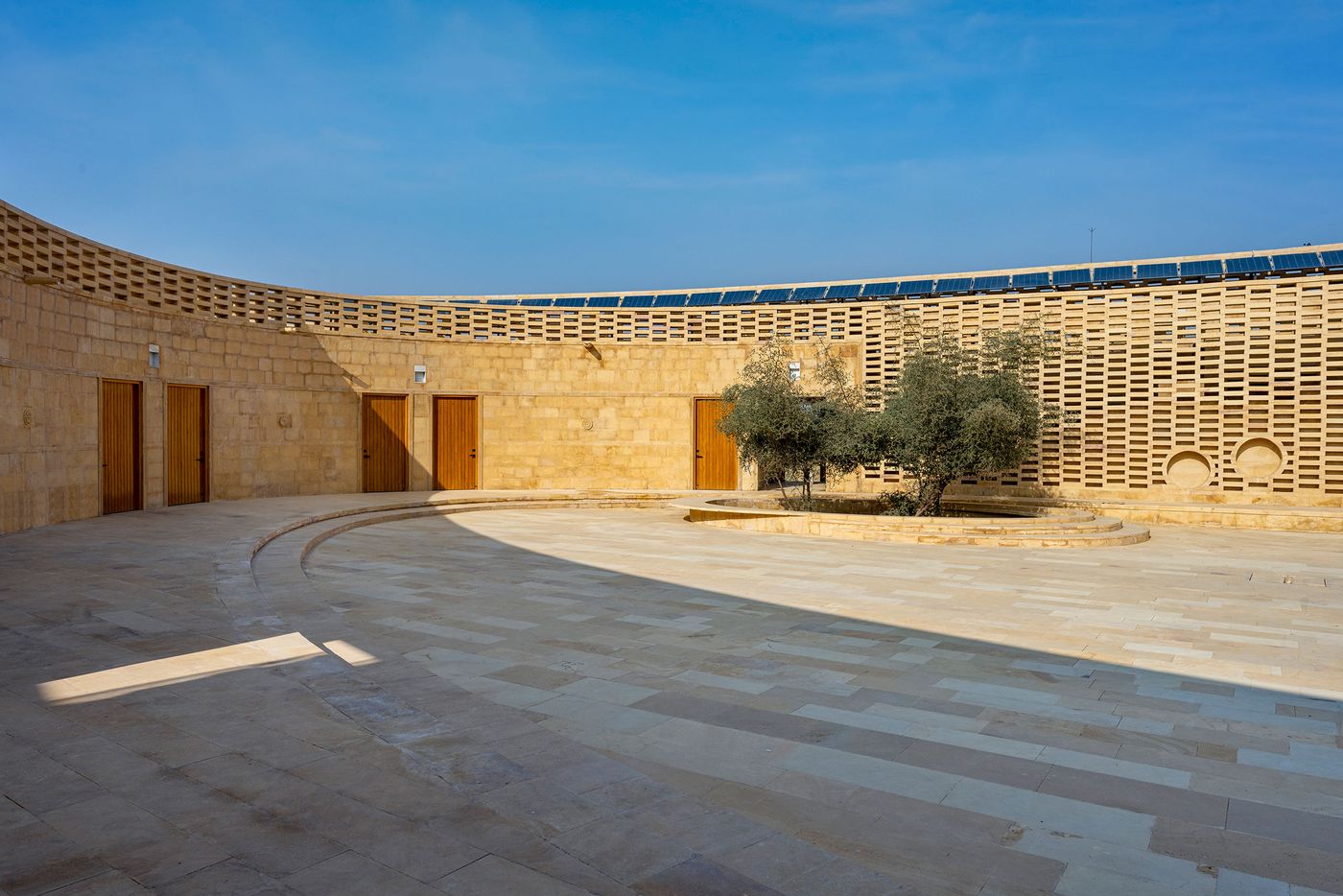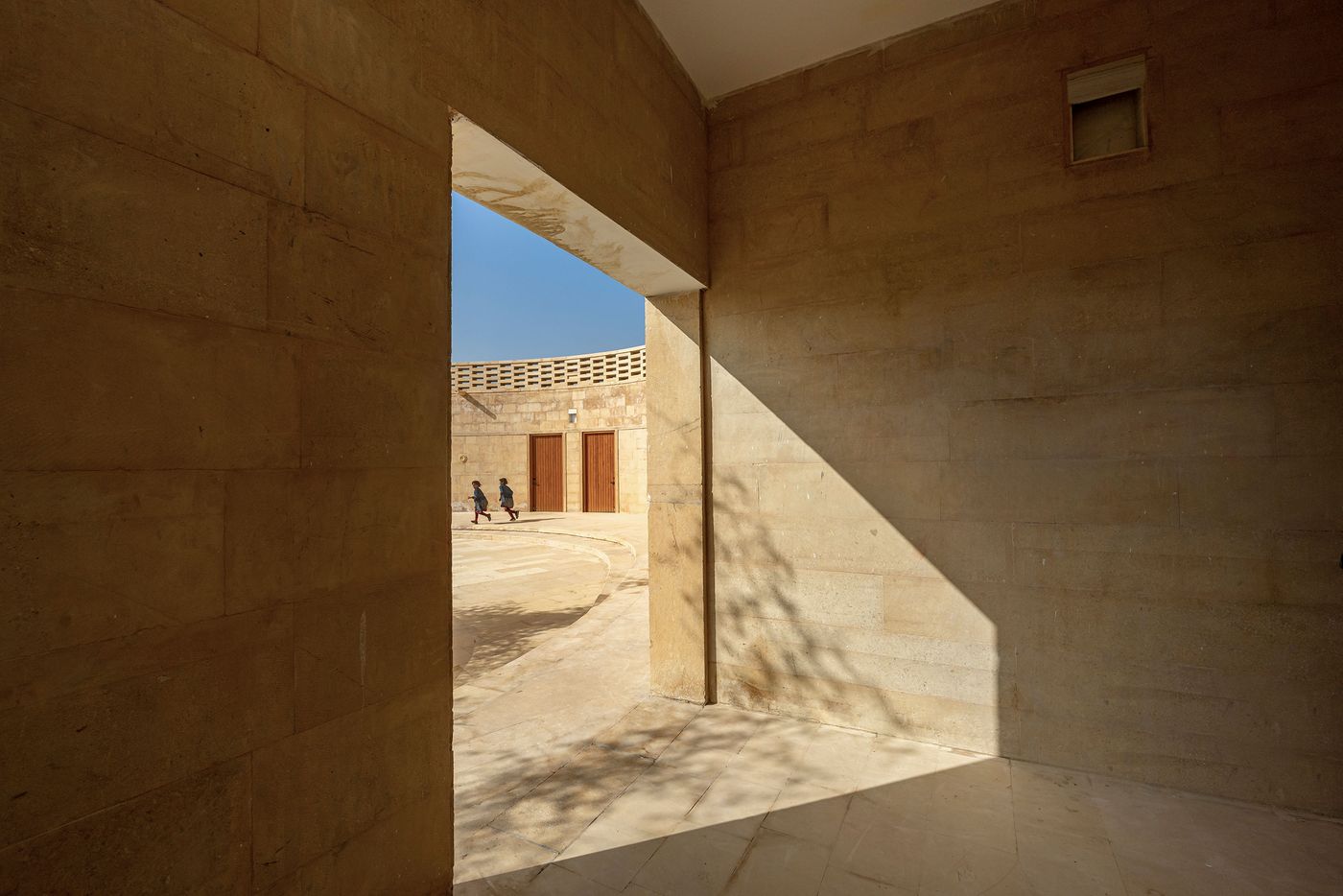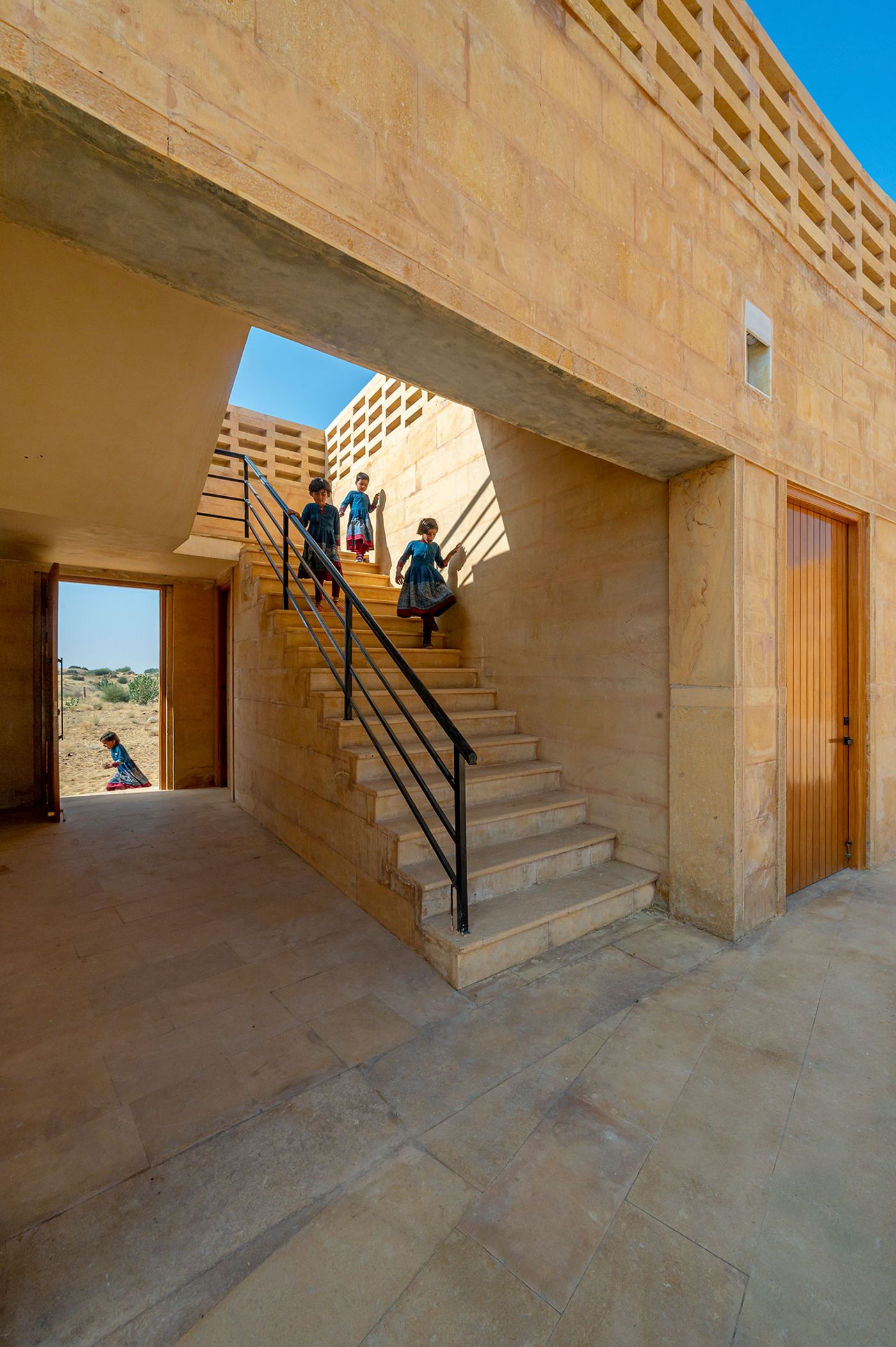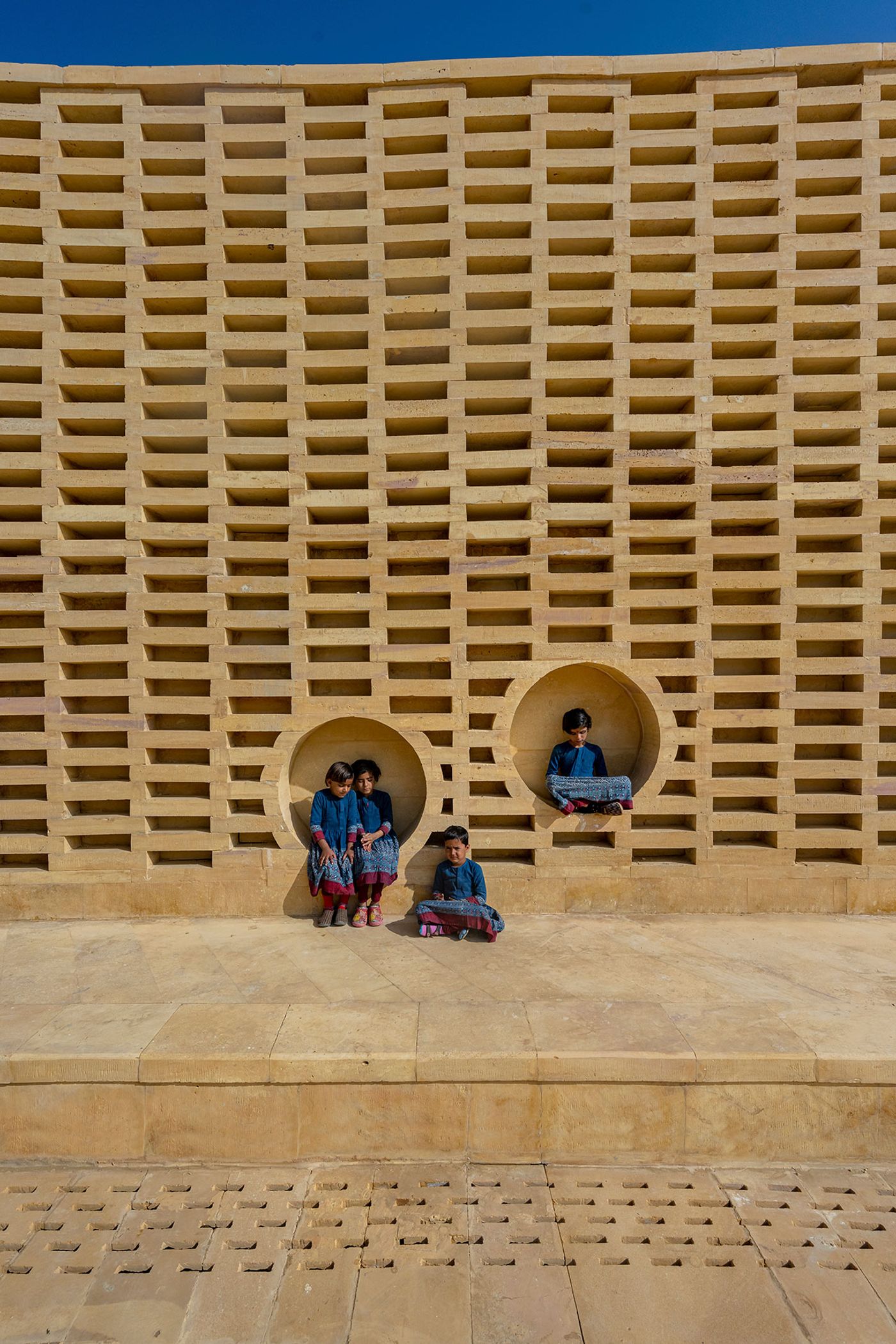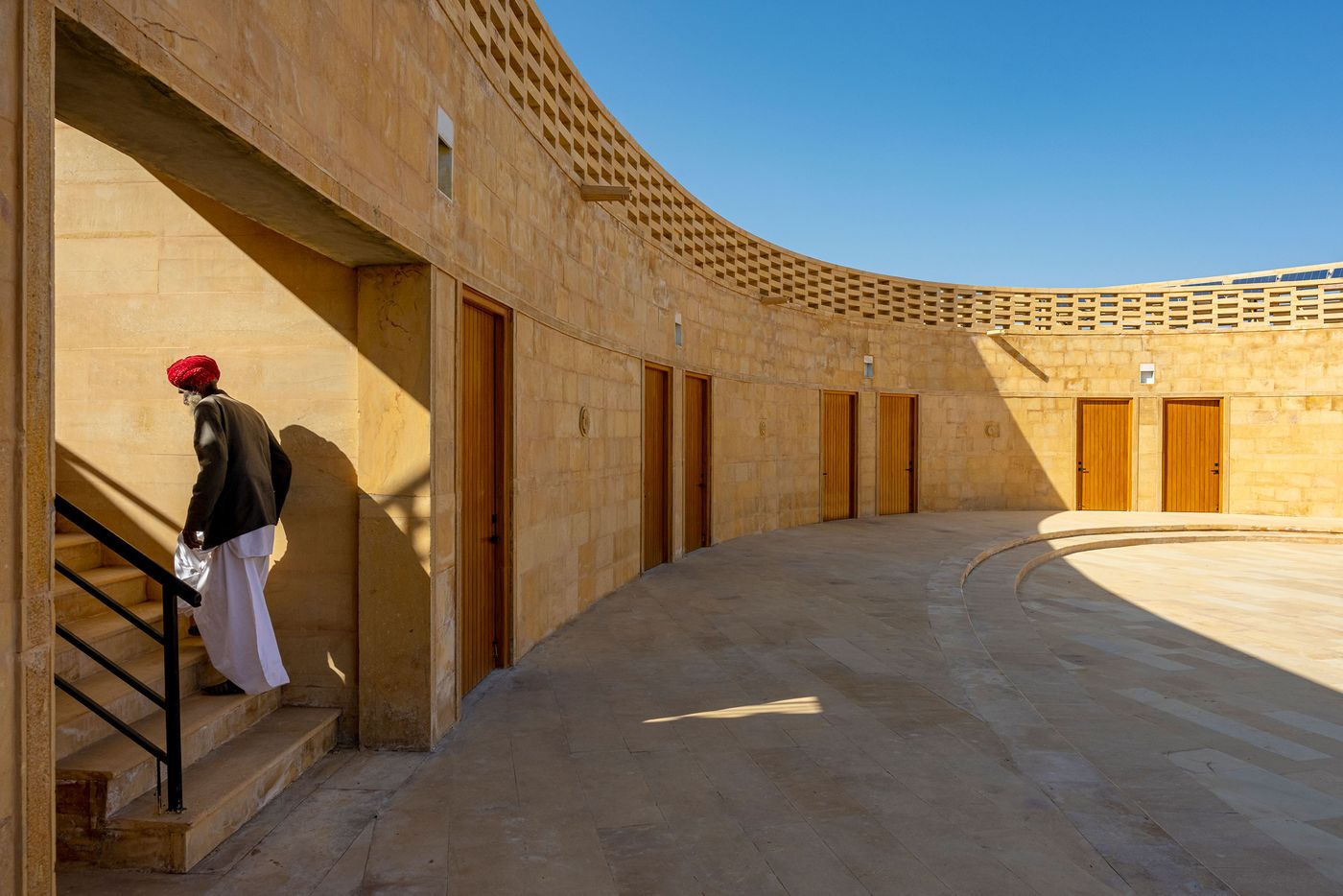
Diana Kellogg Designs a Girls School in India's Thar Desert as a Symbol of Female Empowerment
Words by Yatzer
Location
Jaisalmer, India
Diana Kellogg Designs a Girls School in India's Thar Desert as a Symbol of Female Empowerment
Words by Yatzer
Jaisalmer, India
Jaisalmer, India
Location
Set amid the Thar Desert near Jaisalmer in the western Indian state of Rajasthan, while the recently completed Rajkumari Ratnavati Girl’s School may have opened its doors last November, it might as well have been standing there for centuries. New York-based architect Diana Kellogg drew inspiration from the area’s vernacular architecture designing an oval sandstone structure that harmoniously blends in with the desert landscape as well as stands as a symbol of female empowerment.
Built by local craftspeople using local materials and techniques, the building is a model of both sustainability and community development. In a region where female literacy barely touches 36 percent, over 400 girls, who live below the poverty line, attend the school, from kindergarten to secondary school. As part of the GYAAN Center, which will also include two additional buildings by Kellogg, —a performance and art exhibition space, and an education facility where local artisans will teach mothers and other women weaving and embroidery techniques from the region — the school not only raises the bar for women’s education in Jaisalmer but also raises awareness surrounding the issues faced by women in India on a global scale.
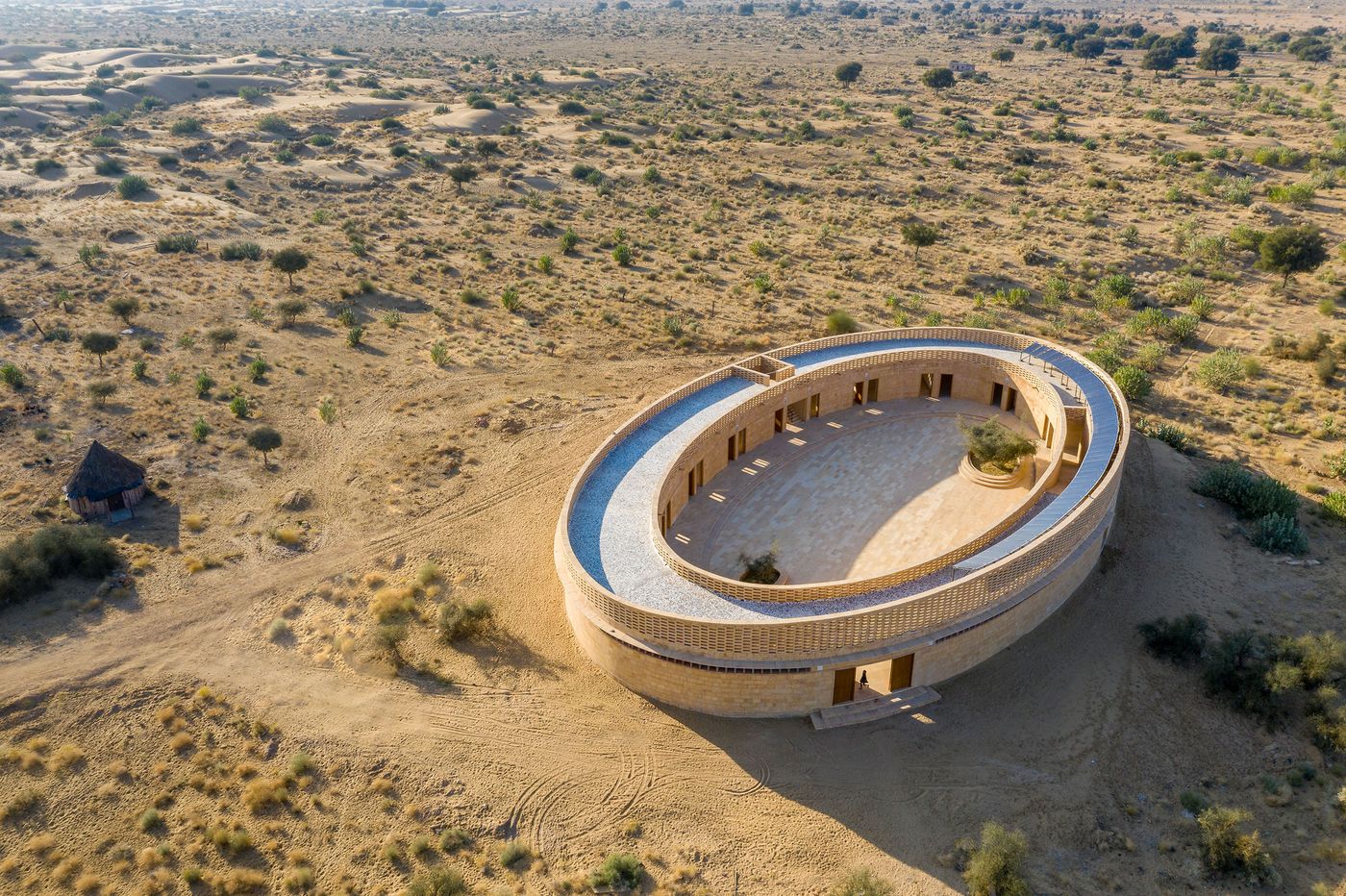
Photography by Vinay Panjwani.
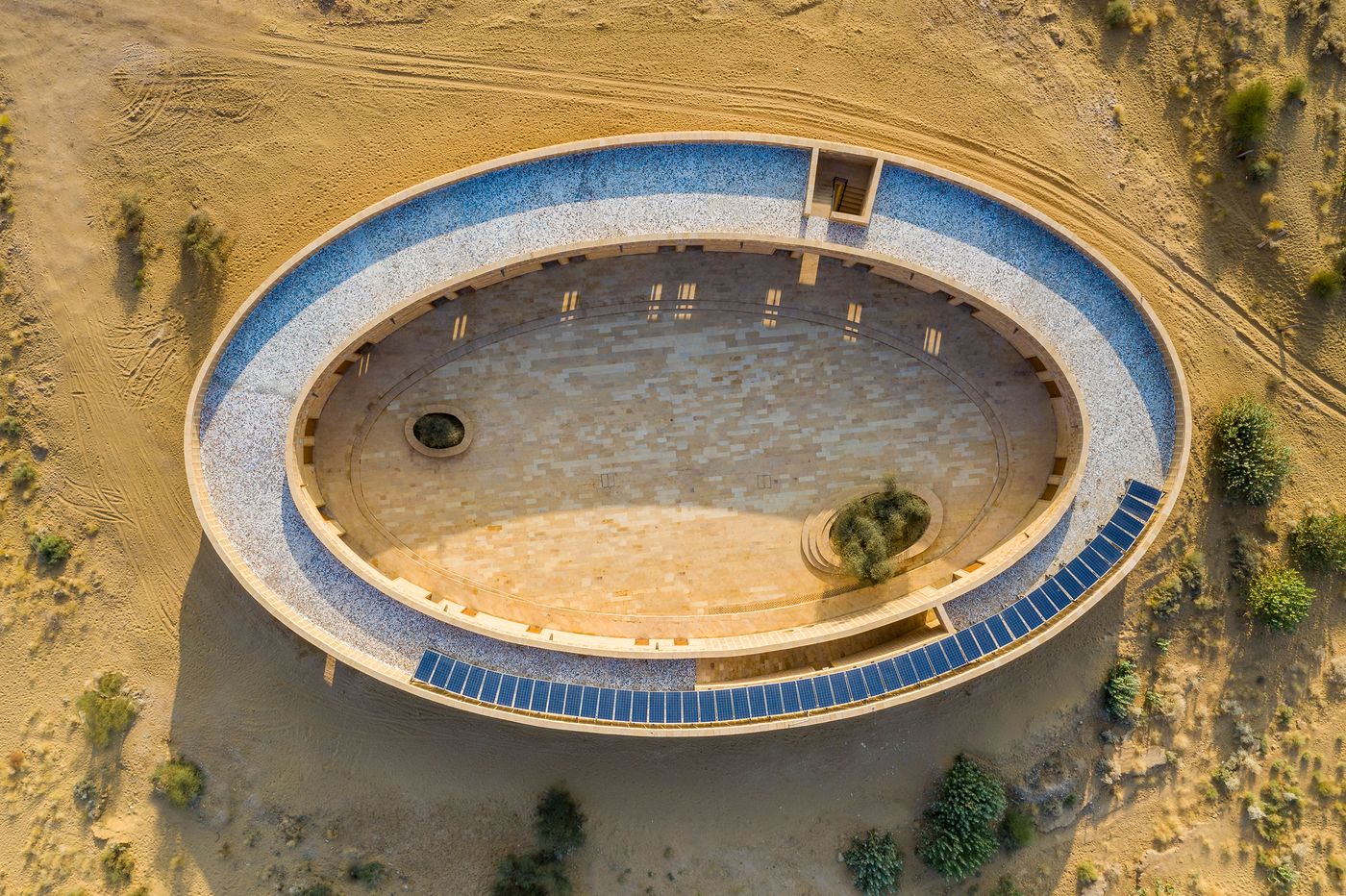
Photography by Vinay Panjwani.
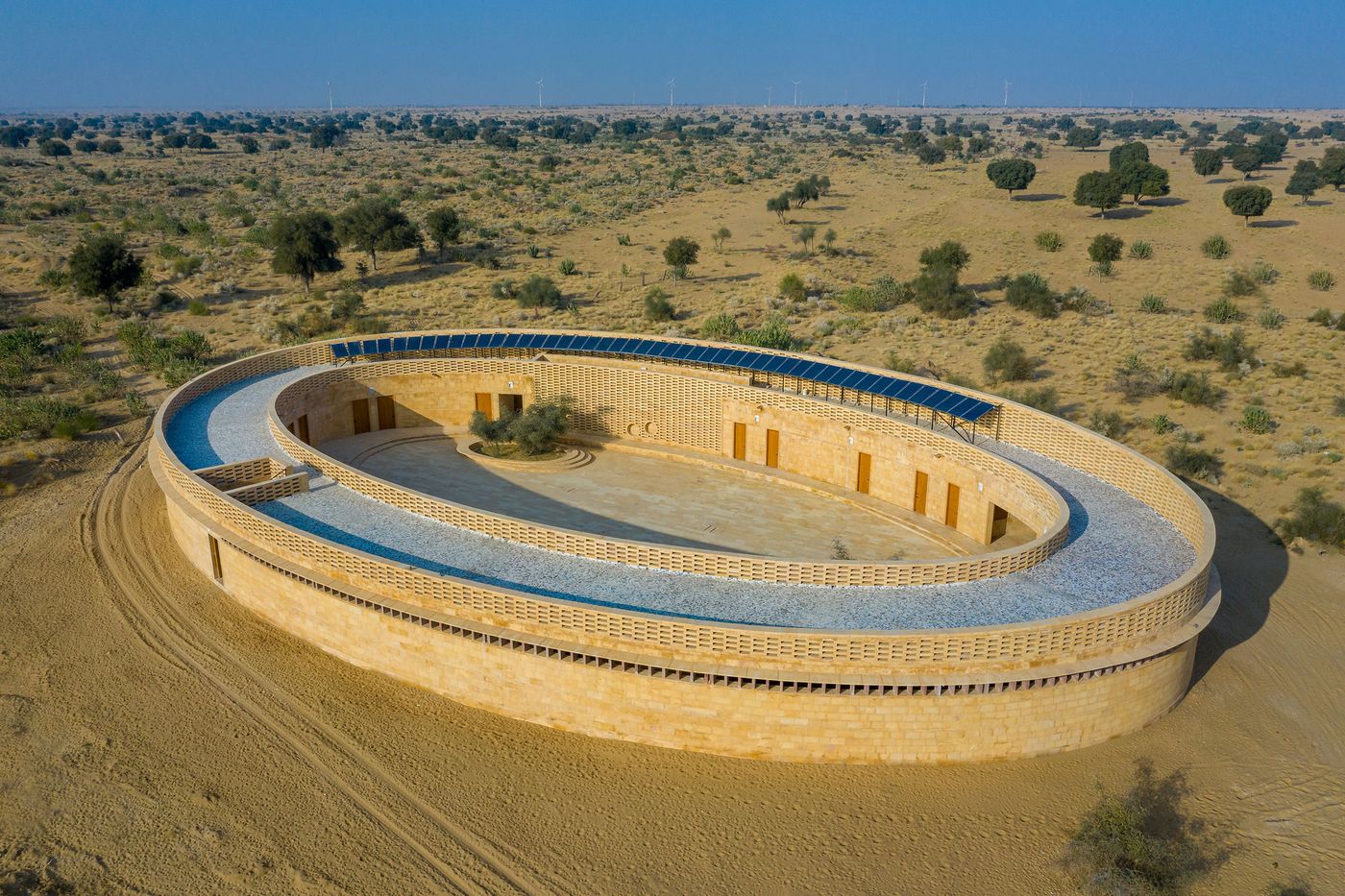
Photography by Vinay Panjwani.
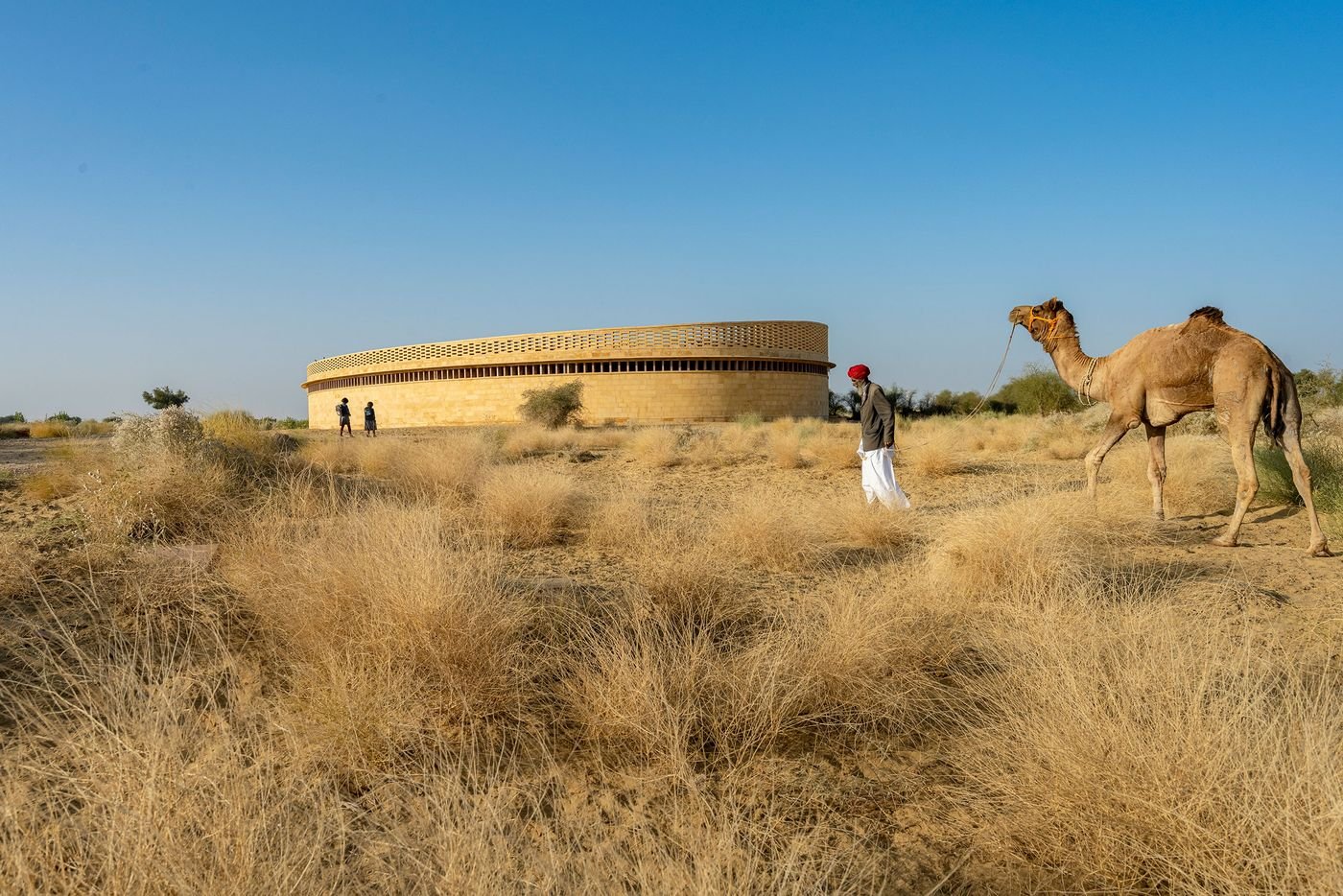
Photography by Vinay Panjwani.
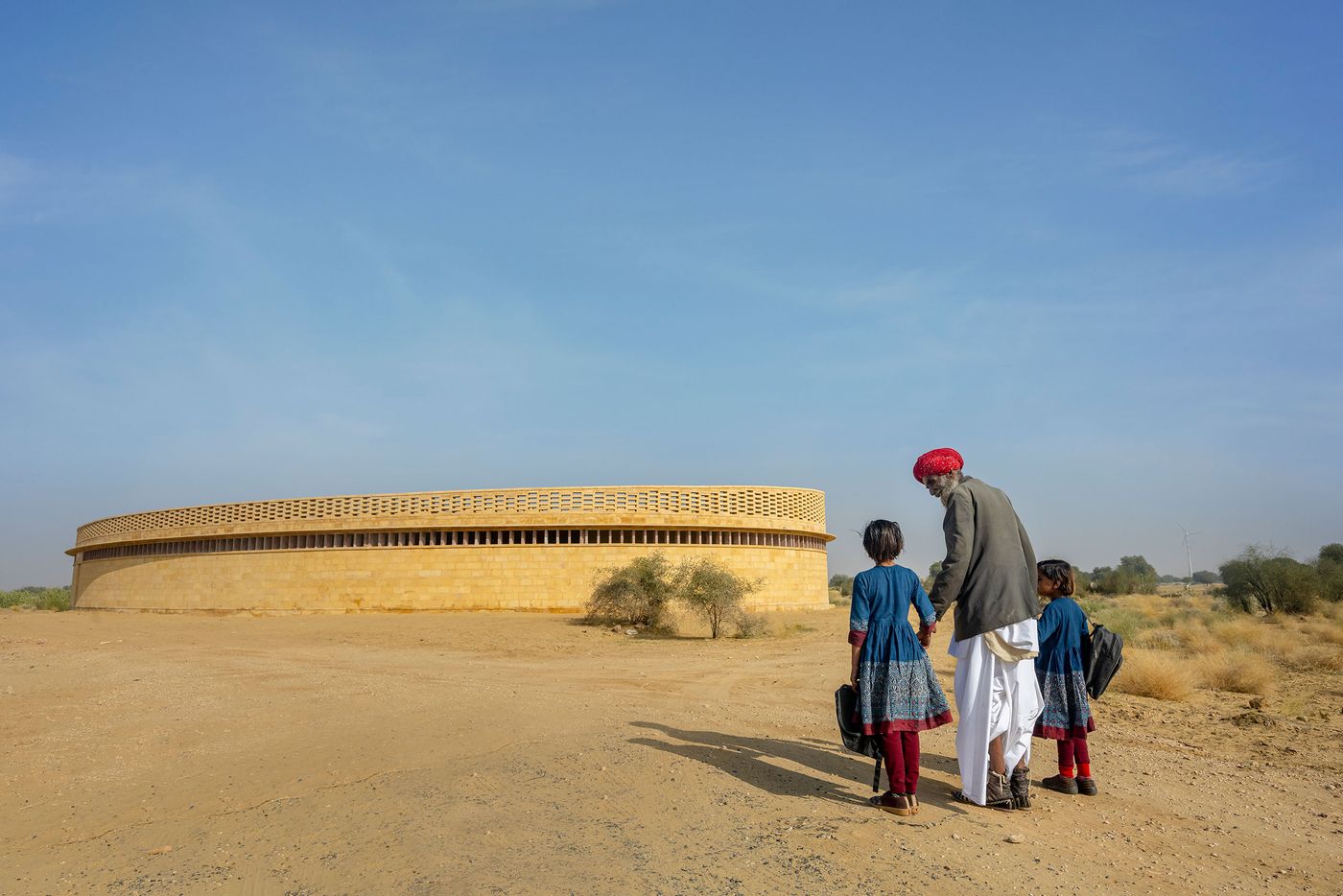
Photography by Vinay Panjwani.
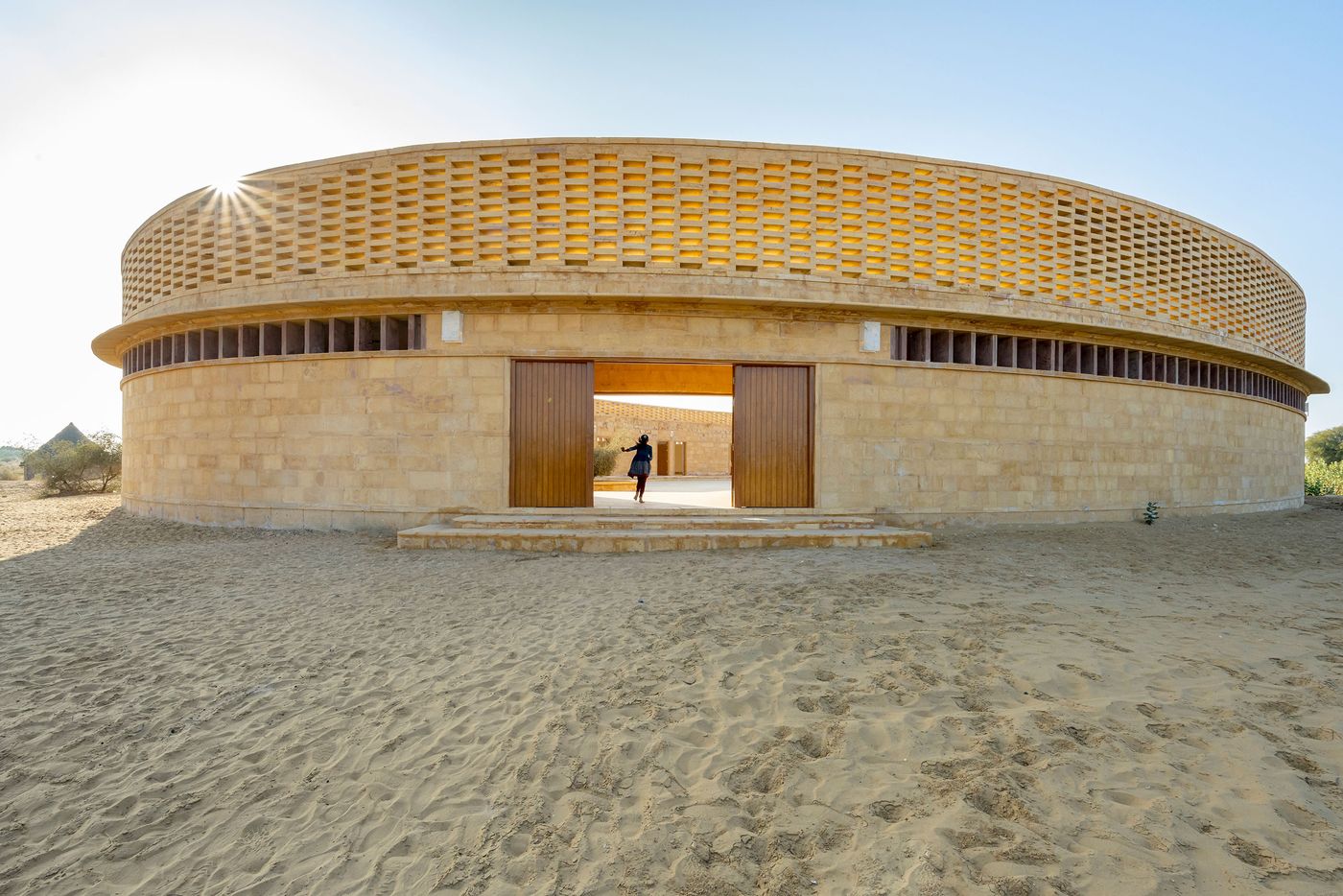
Photography by Vinay Panjwani.
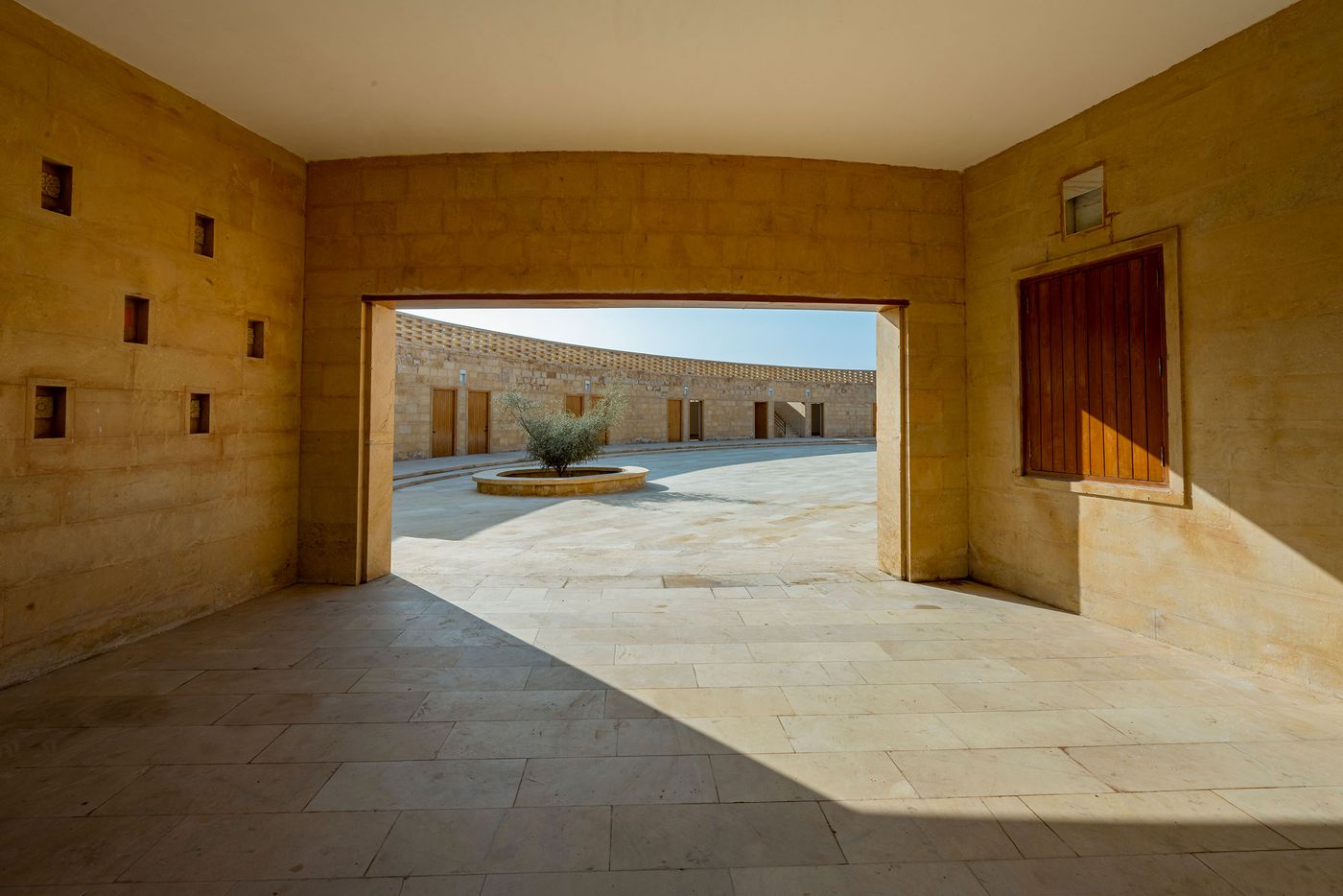
Photography by Vinay Panjwani.

Photography by Vinay Panjwani.
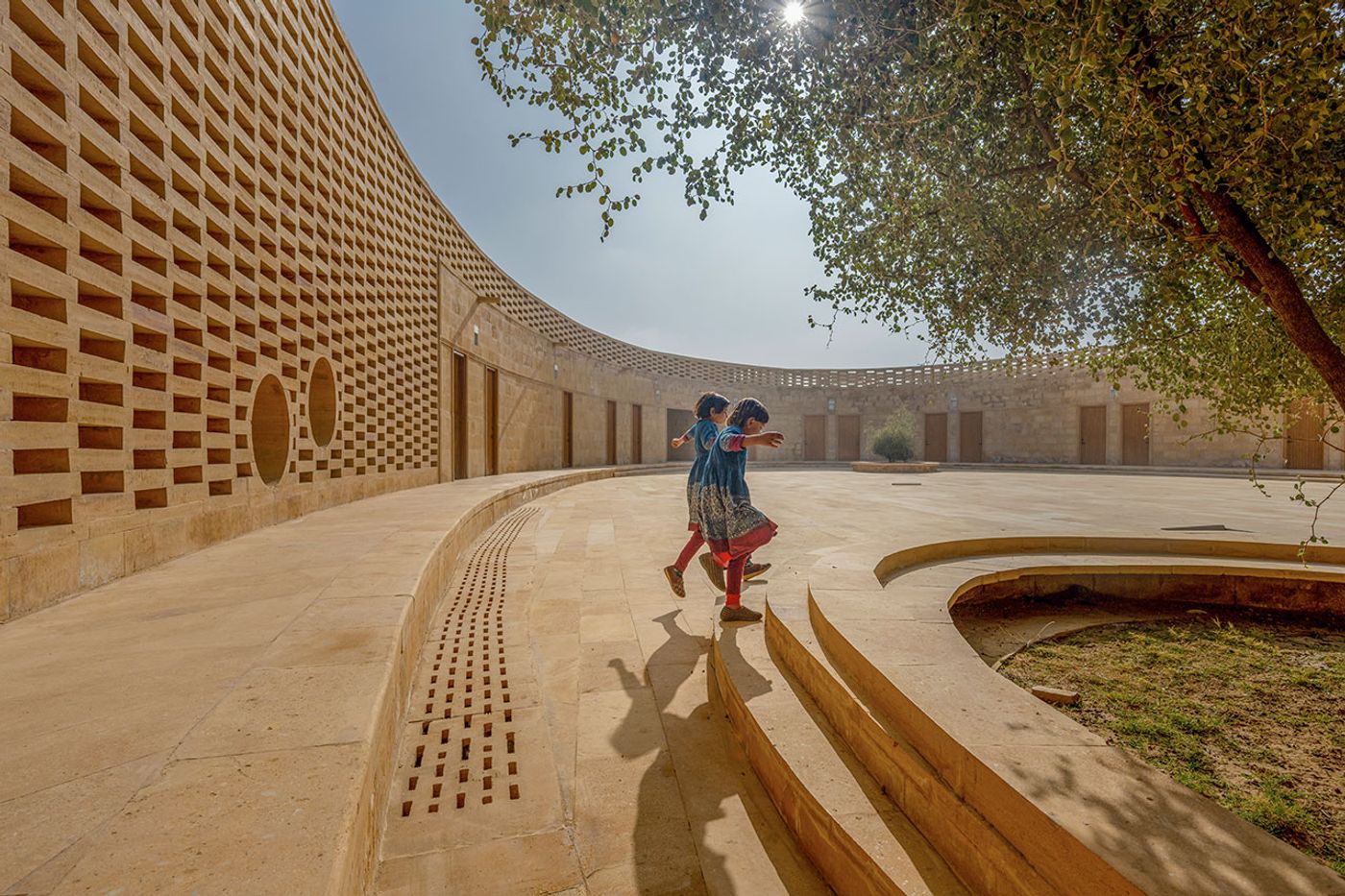
Photography by Vinay Panjwani.
Once a medieval trading centre, the town of Jaisalmer is known as the "Golden City" thanks to its yellow sandstone architecture which includes a sprawling hilltop citadel buttressed by 99 oval-shaped bastions. The school’s elliptical footprint echoes the city’s curvilinear fortifications but its design was also informed by feminine symbols of strength from around the world. In combination with the use of local sandstone, which was hand-carved by local craftspeople using centuries-old techniques, the building is harmoniously integrated with the surrounding sand dunes as part of Kellogg’s “respectful and compassionate approach toward the people and culture of the area”.
The school is centred on an expansive oval-shaped courtyard which the classrooms open onto. Winding corridors connect the classrooms while a sweeping staircase and adjoining ramp lead to a roof terrace circumscribing the building. Hemmed in by latticed parapets that reinvent the ‘jallis’, screen walls traditionally used to hide women for privacy, the roof terrace features a jungle gym complete with seesaws, swings and monkey bars for the girls to play. A canopy sheltering the jungle gym is lined with solar panels that power the school’s lighting and fans as part of the building’s sustainable design. Other aspects of the project’s sustainability credentials include its orientation, which maximizes the prevailing wind and keeps the sunlight out as much as possible, its elliptical form, which was designed to create a cooling panel of airflow, and the use of ancient water harvesting techniques to maximize capturing and recycling rainwater.
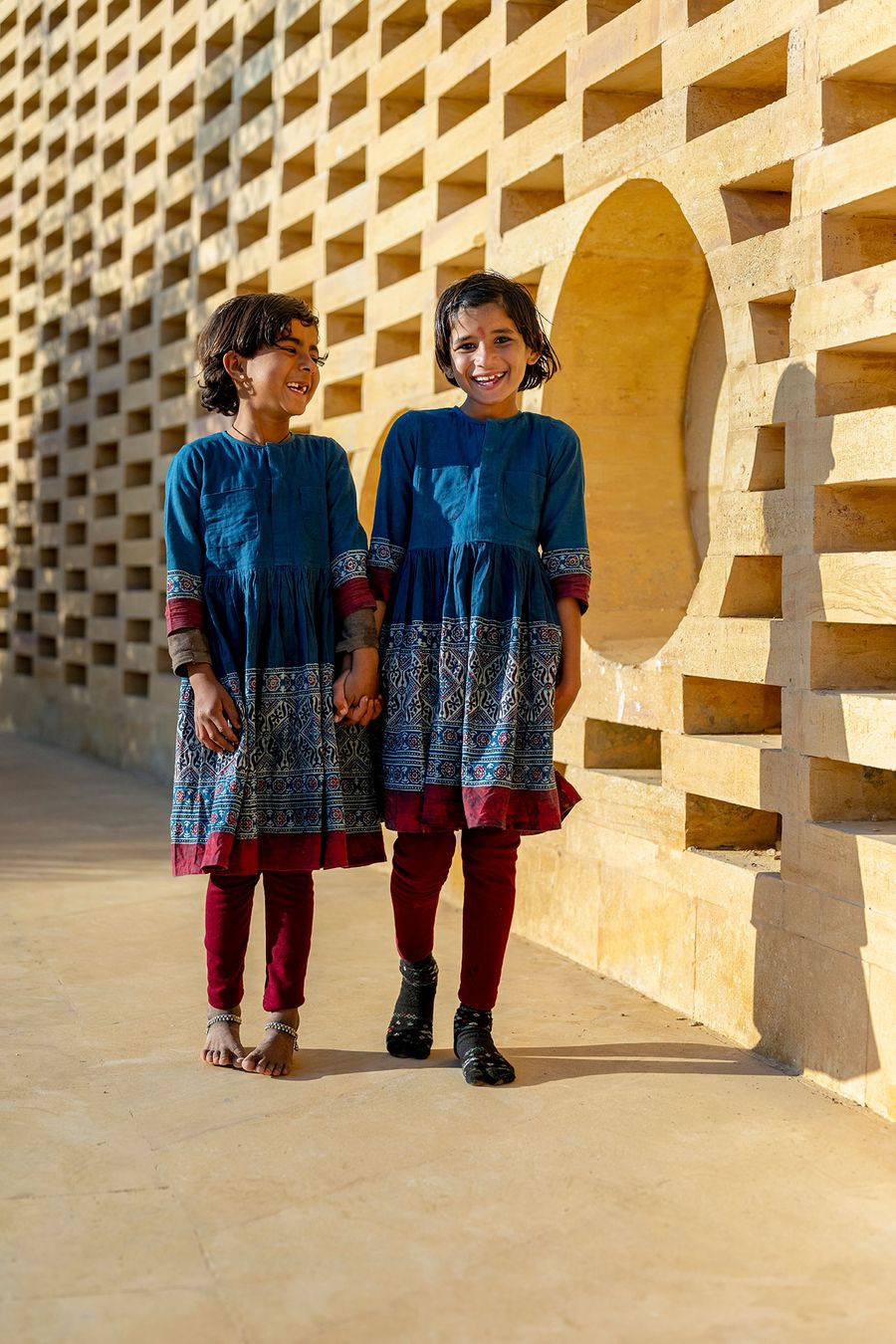
Photography by Vinay Panjwani.
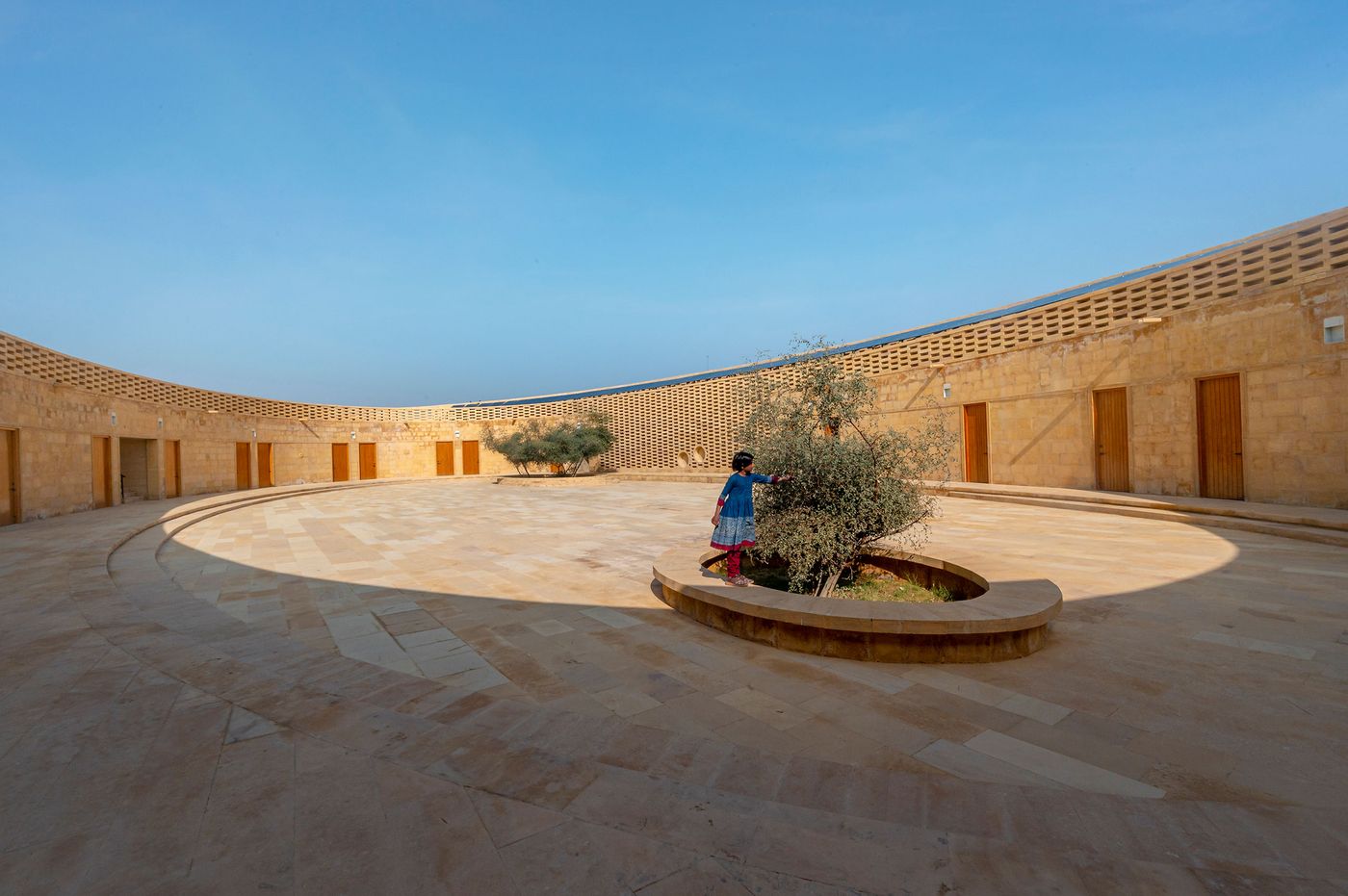
Photography by Vinay Panjwani.
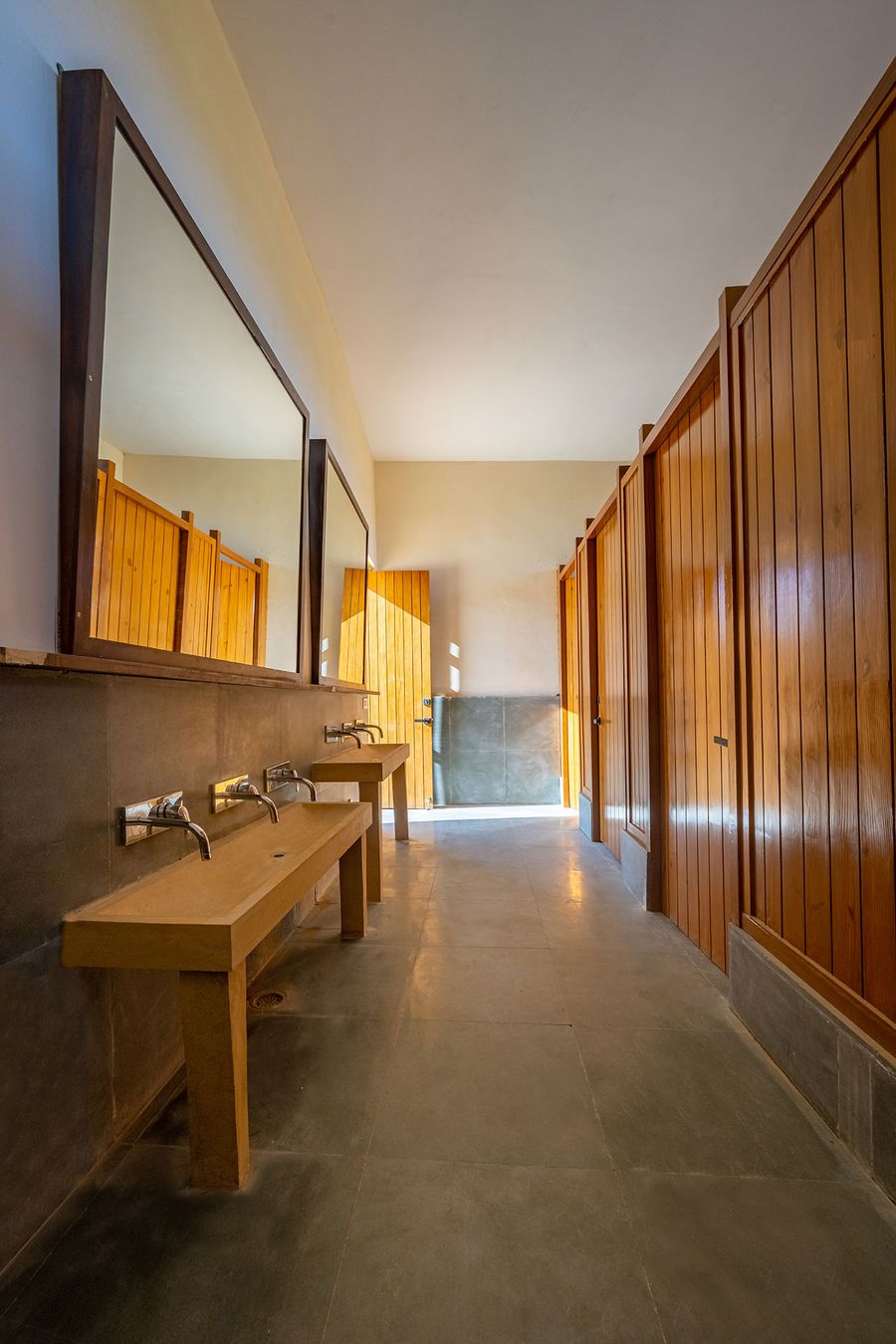
Photography by Vinay Panjwani.
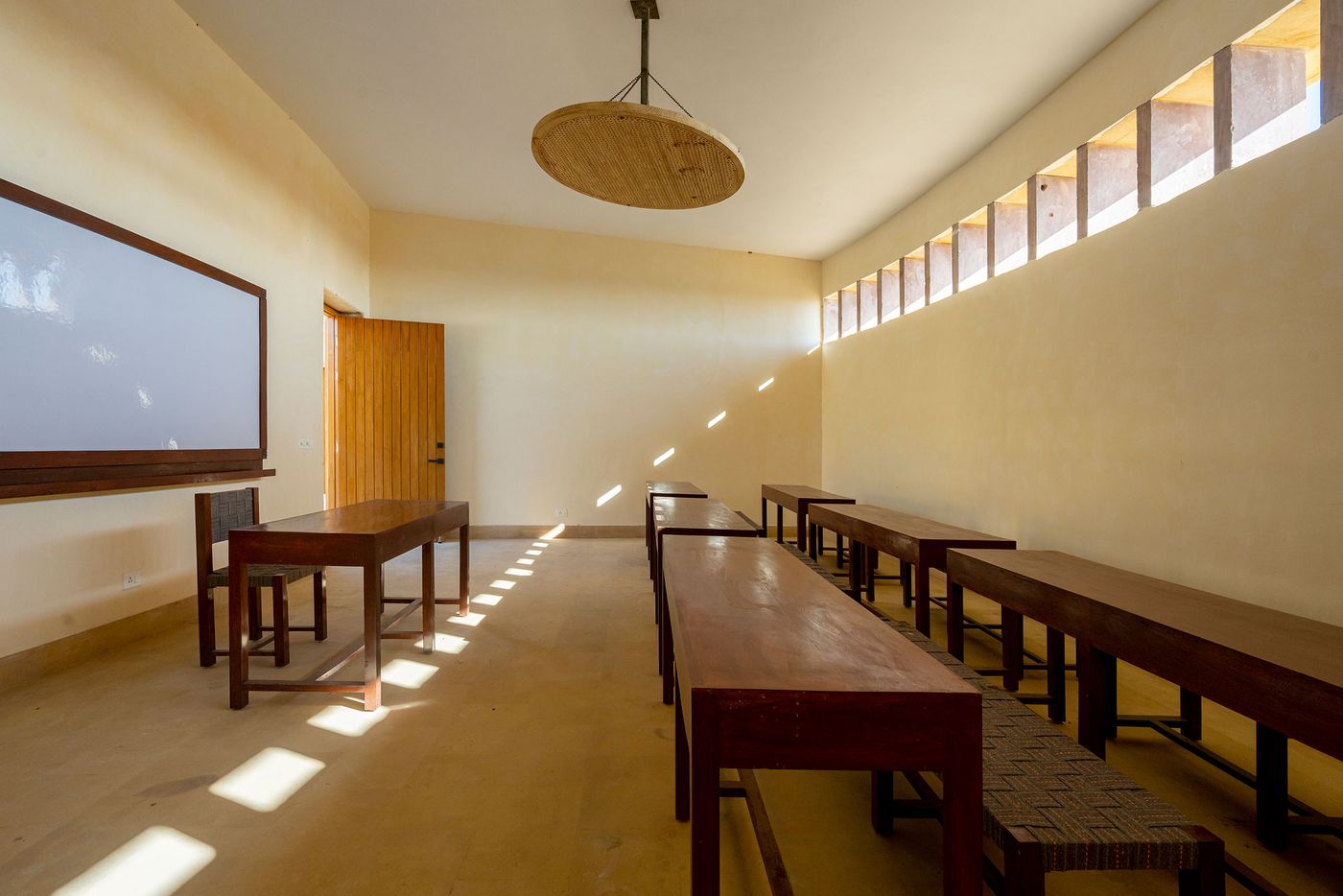
Photography by Vinay Panjwani.
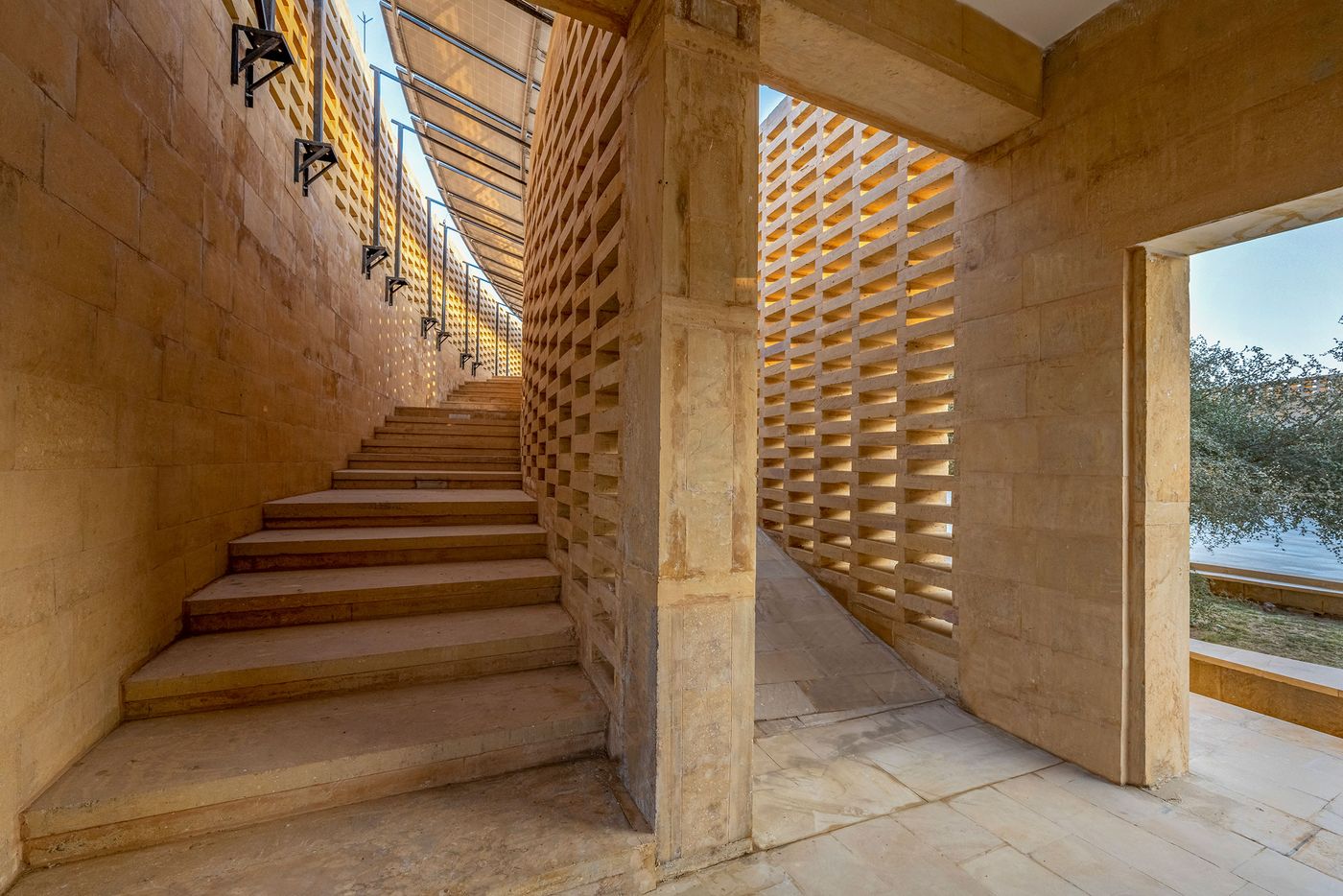
Photography by Vinay Panjwani.
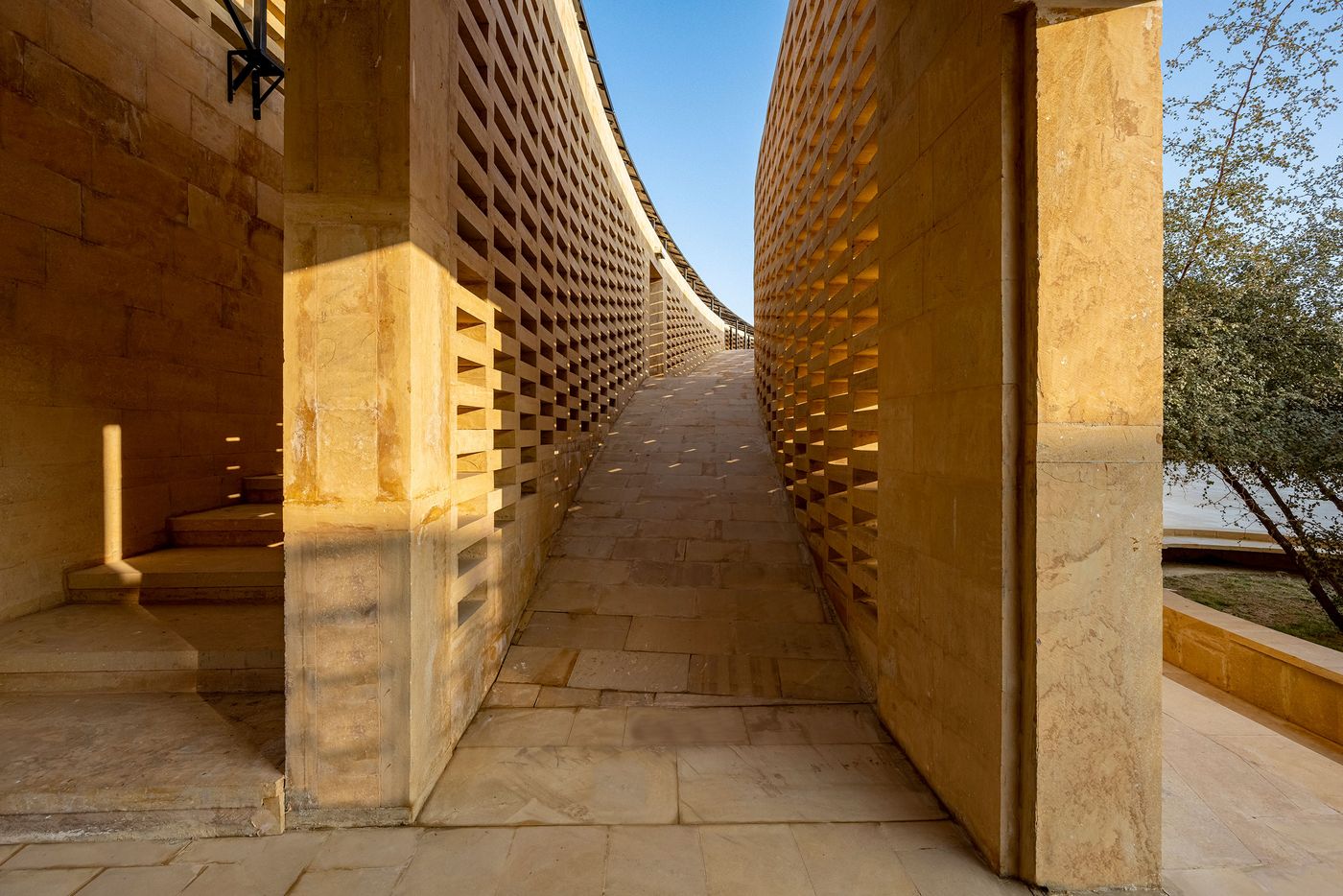
Photography by Vinay Panjwani.
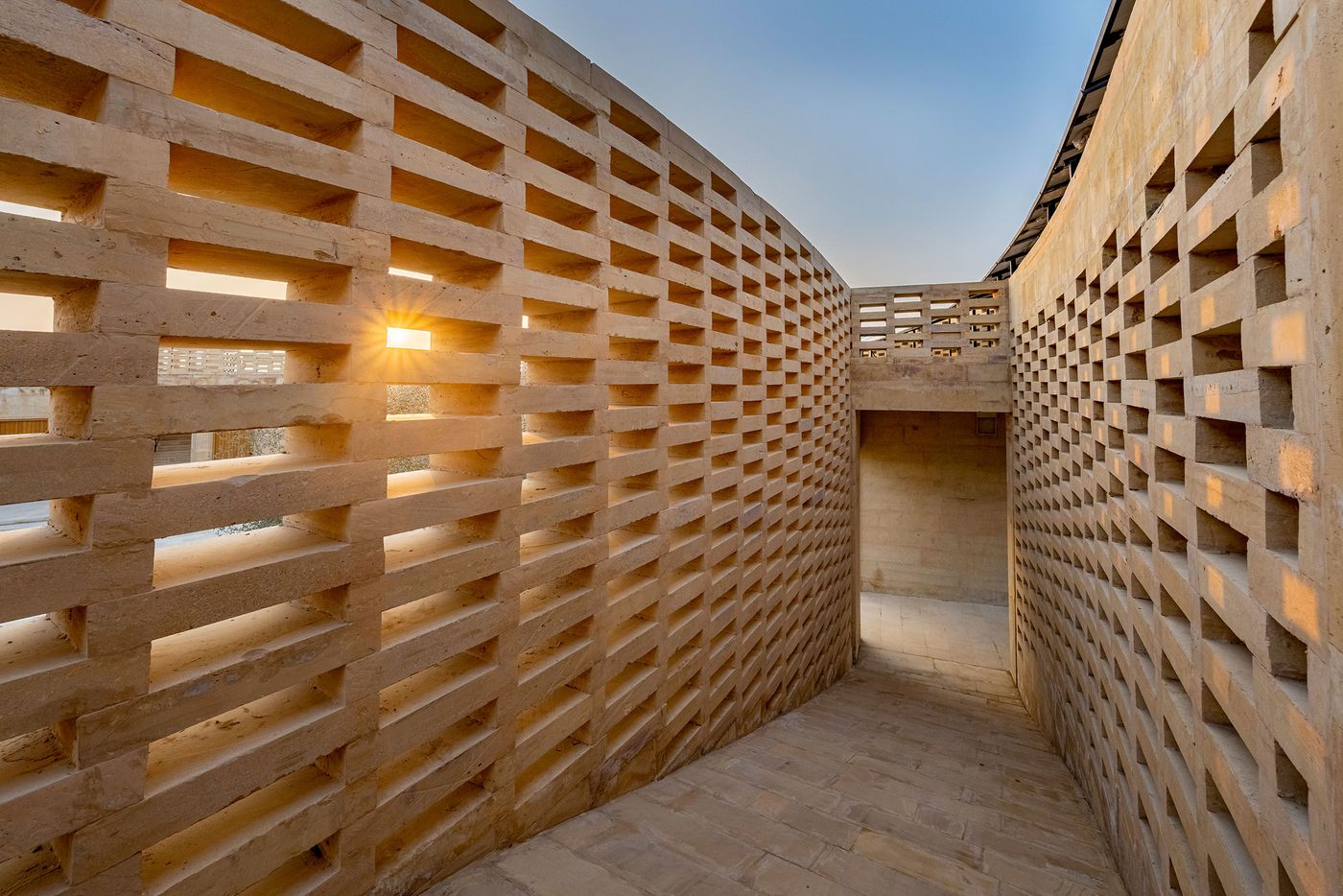
Photography by Vinay Panjwani.
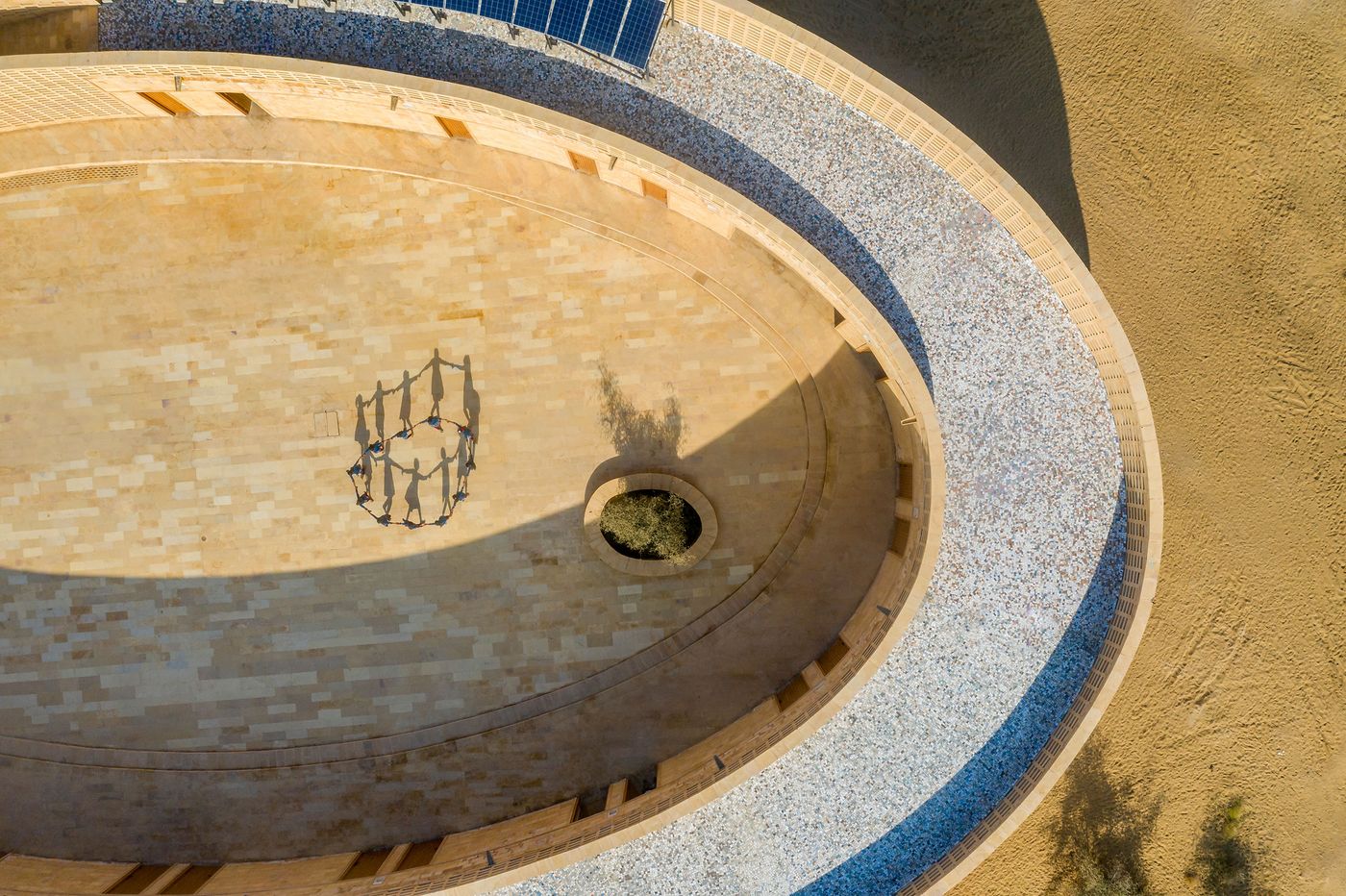
Photography by Vinay Panjwani.
“Since the building was built for a non-profit to support girls’ education”, Kellogg says, “every effort was made toward economic design”, adding that “it was imperative that we incorporated authentic cultural elements, so the Center was a true representation of the region and its members” — a concept that extends from building materials and techniques, to the school’s bespoke furniture made locally out of rosewood with classic Charpai woven seating, through to the girls’ uniforms. Designed by famed Indian fashion designer Sabyasachi Mukherjee, the uniforms are made with Ajrak, a traditional textile that is block-printed with natural dyes using a technique that predates modern history, in order to provide, like the school, a better sense of community, connection and pride for their home.

Photography by Vinay Panjwani.
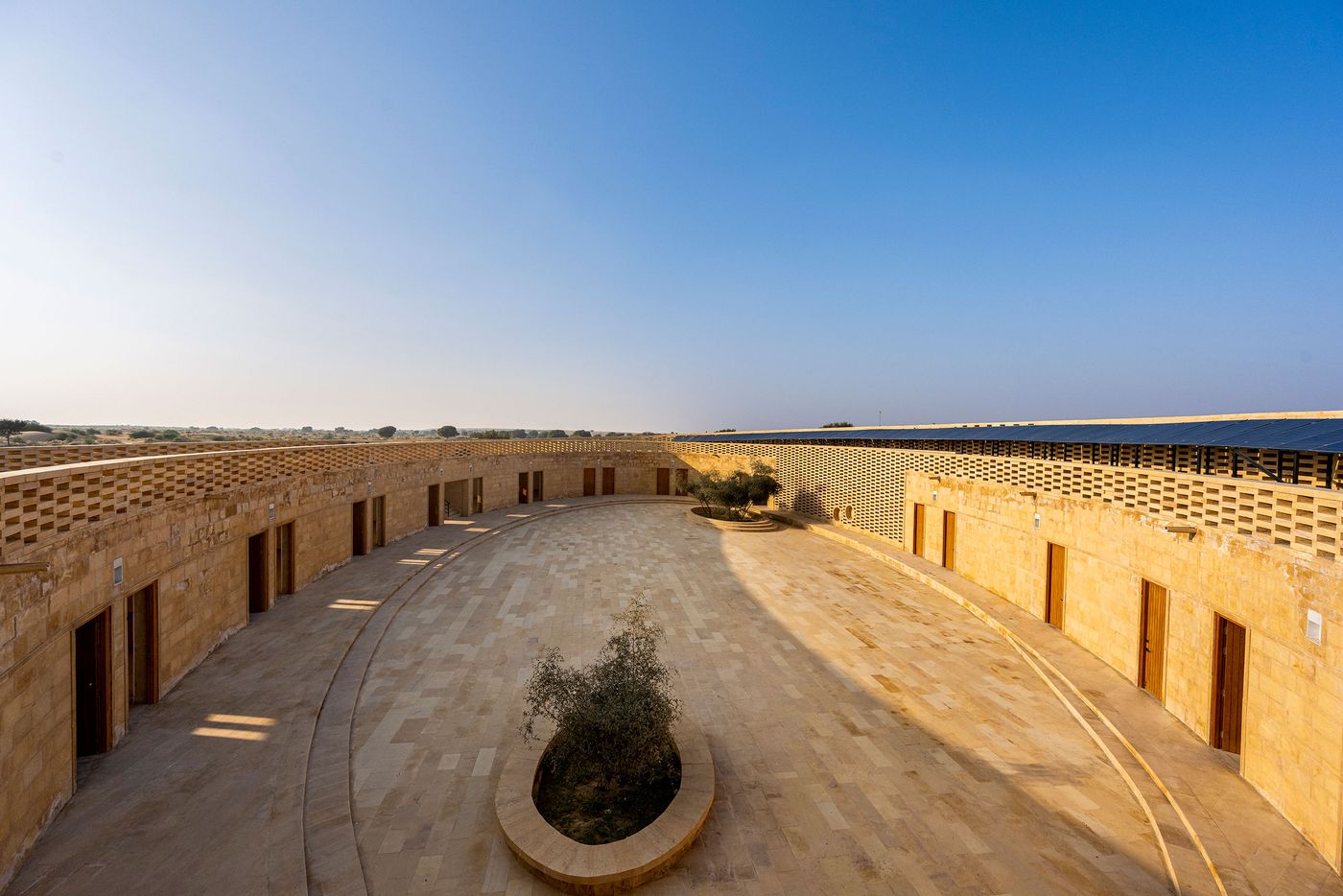
Photography by Vinay Panjwani.
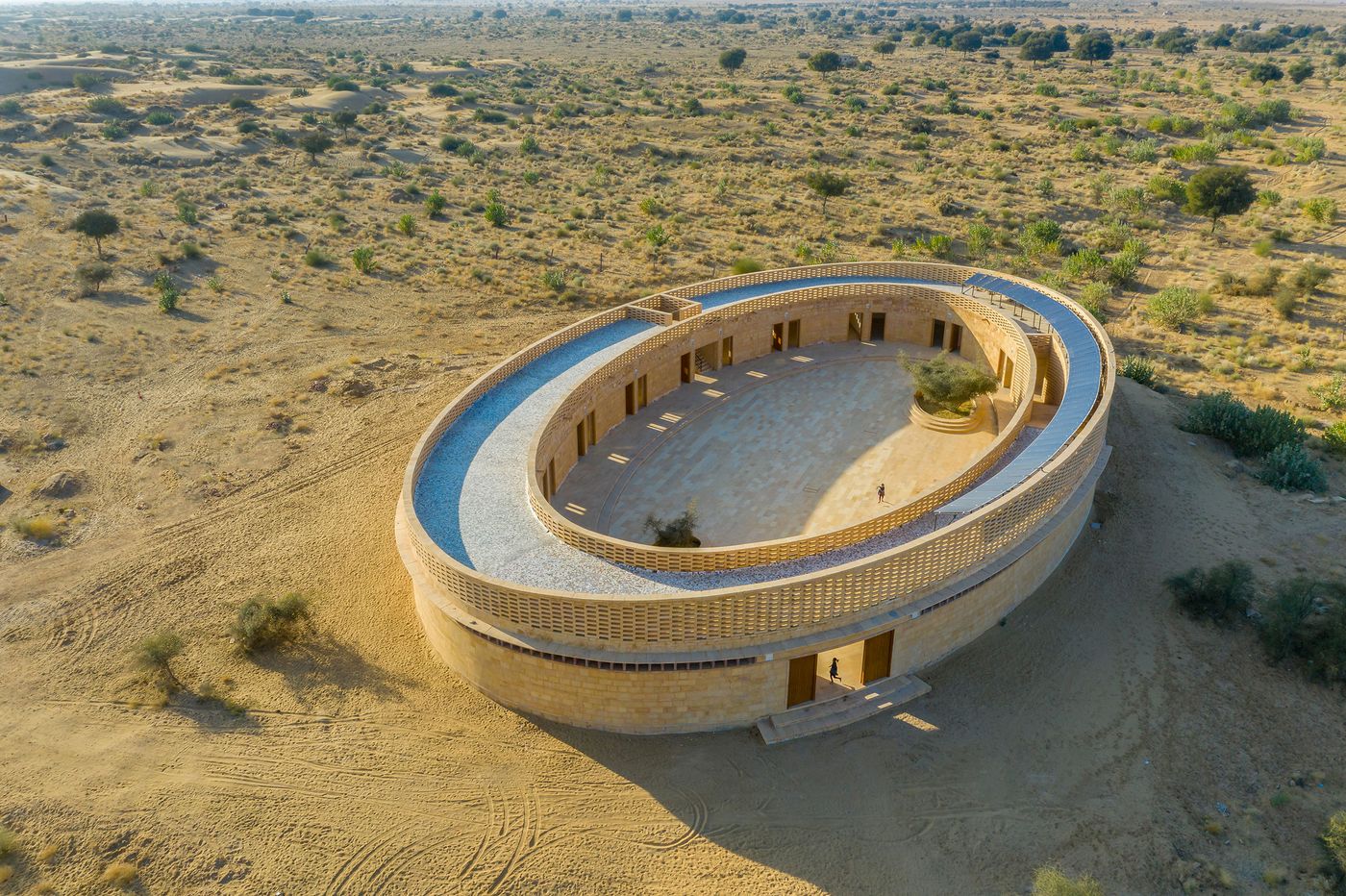
Photography by Vinay Panjwani.
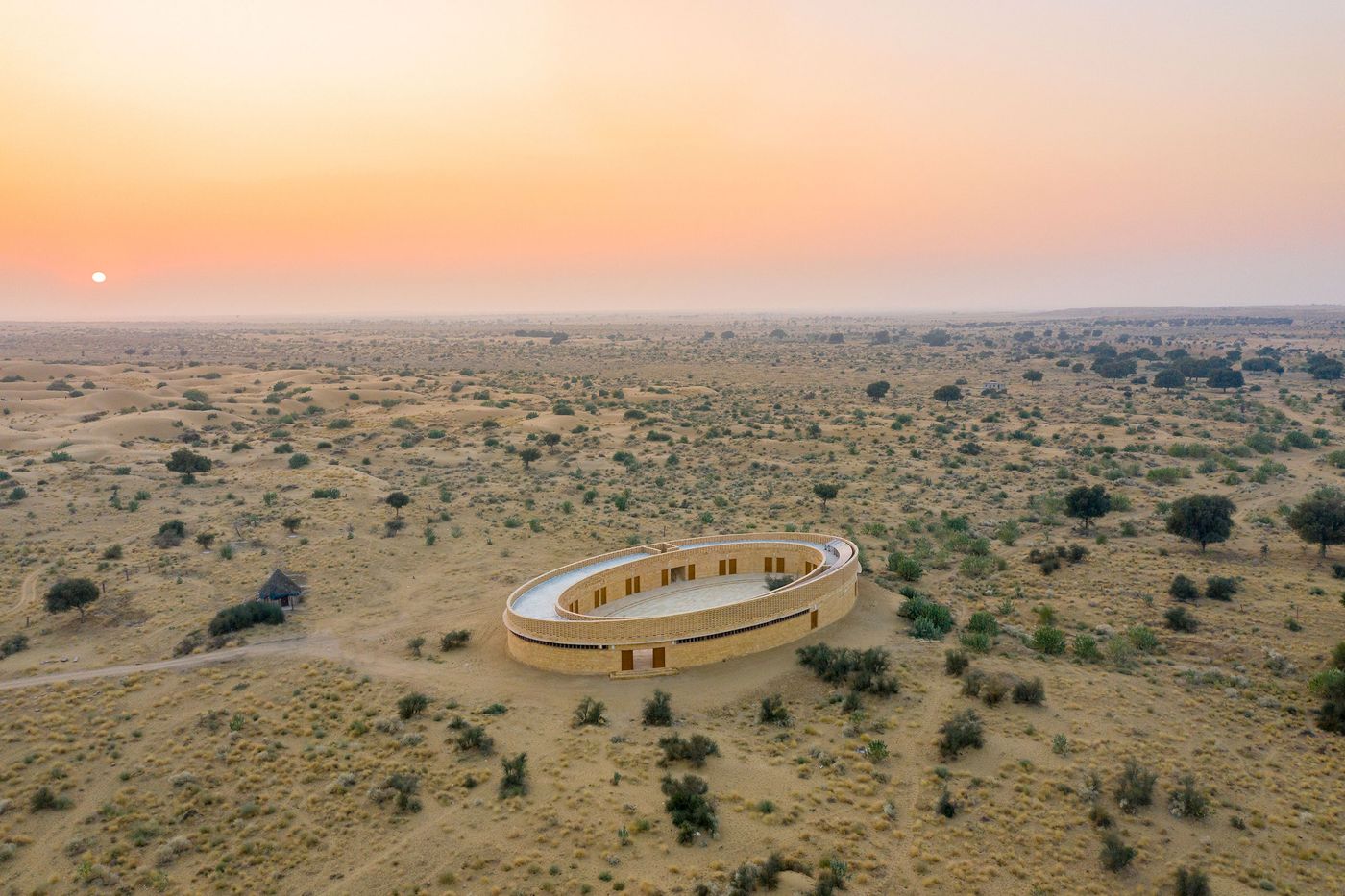
Photography by Vinay Panjwani.

Photography by Vinay Panjwani.
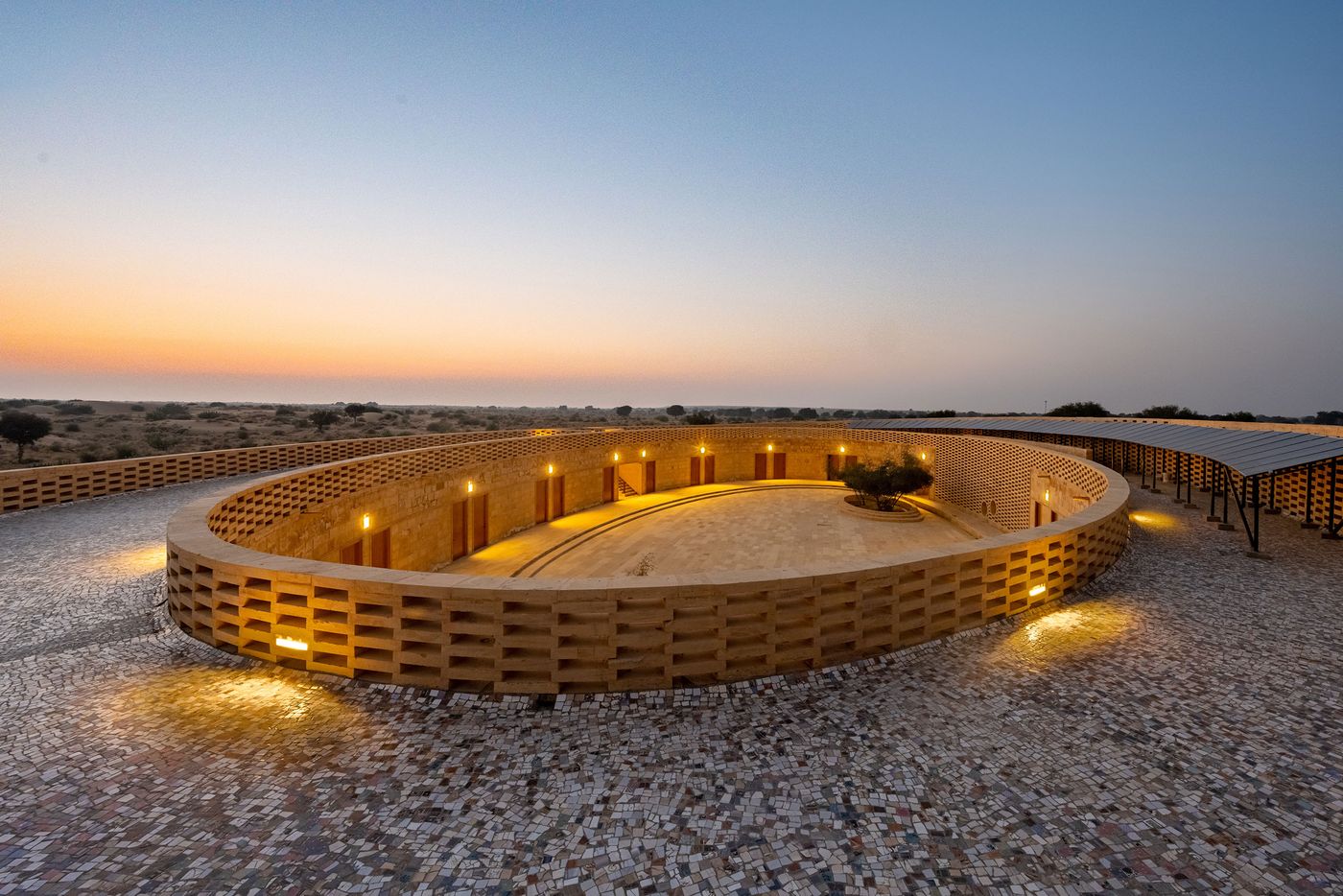
Photography by Vinay Panjwani.
